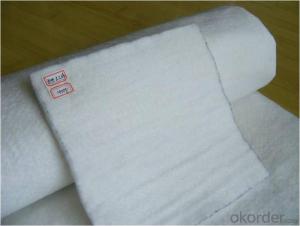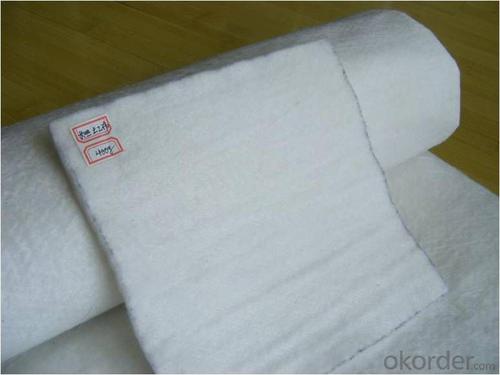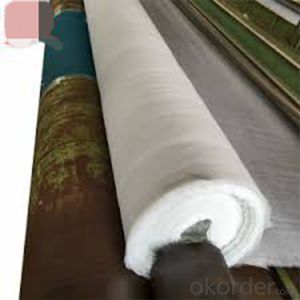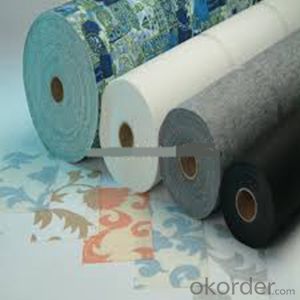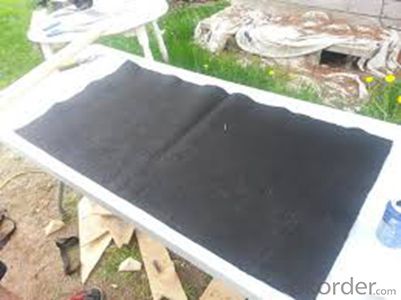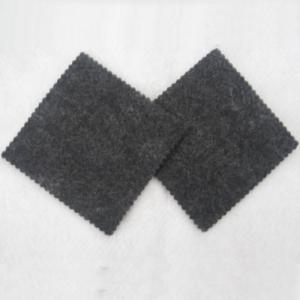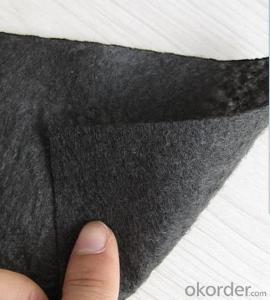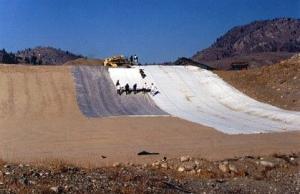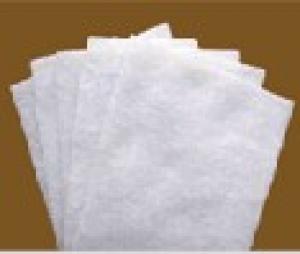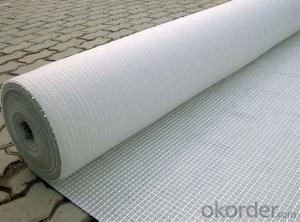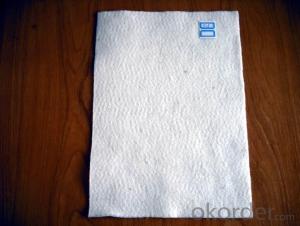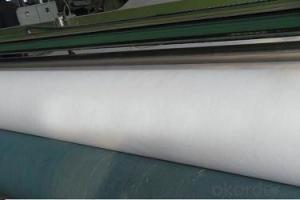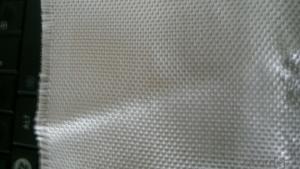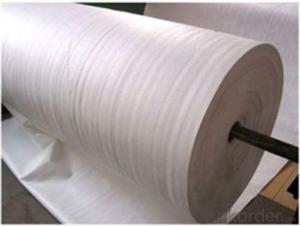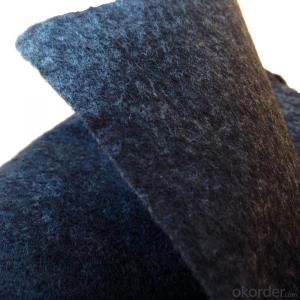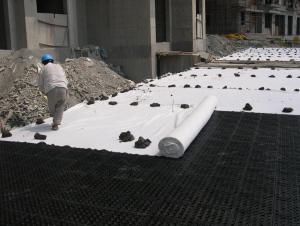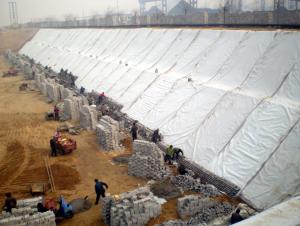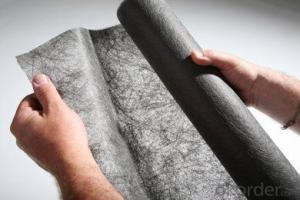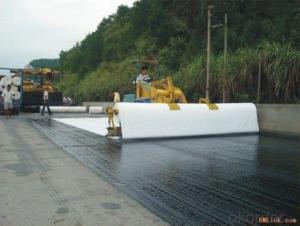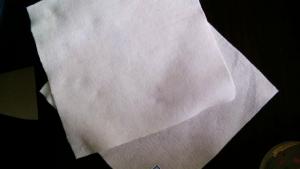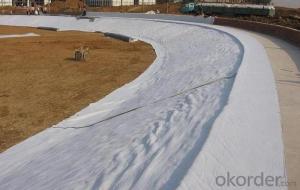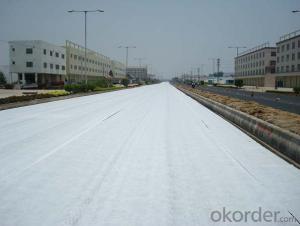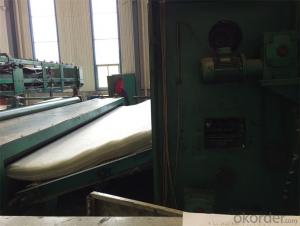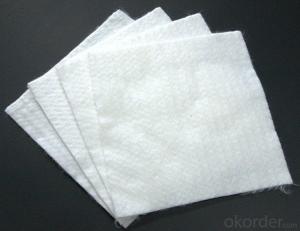Non-Permeable Geotextile Membrane - Pet Filament Fiber Non-Woven Geotextile for Railway
- Loading Port:
- China main port
- Payment Terms:
- TT OR LC
- Min Order Qty:
- 5000 m²
- Supply Capability:
- 1000000 m²/month
OKorder Service Pledge
OKorder Financial Service
You Might Also Like
Specification
PP/PET non woven geotextile,used as earthework material and engineering fabric.width 1-6m,thickness:0.9-6.5mm.weight:100-1200gsm
Our geotextile can be made of polypropylene (PP) or polyester(PET),The weight is available from 100g/m2 to 1200g/m2 and the width from 1m to 6m,Two kinds of processing technical to select: needle punched and thermally bonded.long fiber or short fiber.All kinds of colors are available.Our annual production ability is 20 million square meters.
It is widely known as earthwork material and industry fabric,used in the areas of railway,highway,water conservancy,dam,tunnel,subway,environment protection and so on.
We can supply different specifications as customers`s request.

Detailed Images
Packaging & Shipping
Packing: PLASTIC FILM INSIDE, AND WOVEN BAG OUTSIDE
Shipping: About 15 days after receipt the deposit
geotextile fabric
permeability,filtration,easy for construction
ISO and CE certificate
Good quality and competitive price
Our Service
Quality assurance
1.On a regular basis or as per your request,we entrust national testing agencies to conduct quality inspections
2. Strictly in accordance with the ISO9001-2008 international quality system standard,we monitor and manage the whole process throughout production,quality testing,and measurement to ensure product quality
3. For quality-related construction delay or substandard construction(except for damage or losses due to customer’s responsibility or irresistible natural disasters),we have refunding,replacement,and repair services.We will respond to customers’ feedbacks on quality issues within 24 hours.
After-sales service
1.In order to provide customers with comprehensive technical support,we will provide technical and other related information upon request in a timely manner.
2.In required,we will appoint specialized technicians to the construction site to give technical trainings to construction people,and offer technical guidance throughout the whole construction process.
3.For damage due to shipment and delivery,after we receive the complaint,we will check the issure through provided pictures and videos.If our responsibility is confirmed,we wil offer free replacement.
4.When the construction is completed,as your request,our technical staff may participate in the final acceptance.
FAQ:
Q: What kind of payments does jenor support?
A: T/T, L/C, Cash are accepted.
Q: Do you charge for the samples?
A: Accordeing to our company policy, the samples are free, we only charge the freight fee. And we will return the freight fee during the next order.
Q: Can you produce according to customers' design?
A: Sure, we are professional manufacturer, OEM and ODM are both welcome.
Q: Do you have other products?
A: Yes, please check the pictures:
- Q: What are the different geotextile installation techniques for landfill applications?
- There are several geotextile installation techniques used for landfill applications, including direct burial, slope installation, and liner attachment methods. Direct burial involves placing the geotextile directly on the ground or compacted soil, with subsequent layers of soil or waste material placed on top. Slope installation involves installing the geotextile on a slope, often using anchoring systems to secure it in place. Liner attachment methods involve attaching the geotextile to the liner system, which may include geomembranes, geocomposites, or other liner materials. These techniques are used to enhance the performance and stability of landfills by providing separation, filtration, and drainage capabilities.
- Q: What are the specifications for geotextiles used in geosynthetic tubes?
- The specifications for geotextiles used in geosynthetic tubes typically include factors such as tensile strength, puncture resistance, permeability, UV resistance, and durability. These geotextiles are usually designed to provide high strength and stability while allowing water to pass through, effectively filtering sediment and retaining soil within the geosynthetic tube. Additionally, they are often required to withstand harsh environmental conditions and maintain their performance over an extended period of time.
- Q: What are the types of geogrids?
- Glass fiber geogrid, polyester fiber geogrid, 9080 fiberglass, polyester composite geotextile, steel-plastic composite geogrid, PP grille, one-way two-way stretch plastic geogrid,
- Q: Can geotextiles be used in geotechnical engineering projects?
- Yes, geotextiles can be used in geotechnical engineering projects. Geotextiles are engineered fabrics that are commonly used to reinforce soil, separate different soil layers, and provide filtration and drainage in various geotechnical applications. They can improve the stability, strength, and performance of soil structures, such as retaining walls, embankments, and roadways, by effectively managing water flow and soil interactions.
- Q: What are the considerations for geotextile selection in shoreline erosion control?
- There are several key considerations for geotextile selection in shoreline erosion control. First, the geotextile must have a high tensile strength to withstand the forces exerted by waves and currents. It should also be permeable to allow for water drainage and prevent the buildup of hydrostatic pressure. Additionally, the geotextile should be resistant to UV degradation and chemical exposure to ensure long-term durability. The choice of material and installation method should also take into account the specific site conditions, such as wave energy, sediment composition, and slope stability. Finally, cost and availability of the geotextile should be considered to ensure the solution is practical and feasible.
- Q: River design design depth of 1 meter, 100 meters wide surface, requiring geotextile cloth two films. How many grams are appropriate? Bao Bao package material per square meter open to move to cut the amount of taxation Bao Bao Bao how much money first thank you master, urgent use. More
- Collar - Xiang, composite geomembrane, geotextile, a variety of specifications
- Q: Can geotextiles be used in waste storage facility applications?
- Yes, geotextiles can be used in waste storage facility applications. Geotextiles can provide several benefits in waste storage facilities, such as erosion control, filtration, and separation of different layers of waste materials. They can also help to improve the stability and performance of waste storage structures by reinforcing the soil and preventing the migration of fine particles.
- Q: How do geotextiles aid in the protection of geomembranes?
- Geotextiles aid in the protection of geomembranes by acting as a protective barrier between the geomembrane and the surrounding soil or other materials. They prevent direct contact and potential damage from sharp objects, rocks, or roots, while allowing for the drainage of water and gases. This helps to extend the lifespan of the geomembrane and maintain its integrity, ensuring effective containment and protection in various applications such as landfills, ponds, or construction projects.
- Q: Geotextile (two cloth a film) to detect the frequency requirements? On behalf of the number?
- Geotextile and geomembrane detection frequency is 100 volumes detection time.
- Q: What is the role of the laying of geotextiles at the bottom of the grassland?
- From the soil and soil, fixed slope protection, anti-erosion, anti-filter (over the water, but soil) and other effects, I professional production geotextile, geomembrane and other products, wish smooth
Send your message to us
Non-Permeable Geotextile Membrane - Pet Filament Fiber Non-Woven Geotextile for Railway
- Loading Port:
- China main port
- Payment Terms:
- TT OR LC
- Min Order Qty:
- 5000 m²
- Supply Capability:
- 1000000 m²/month
OKorder Service Pledge
OKorder Financial Service
Similar products
Hot products
Hot Searches
Related keywords
